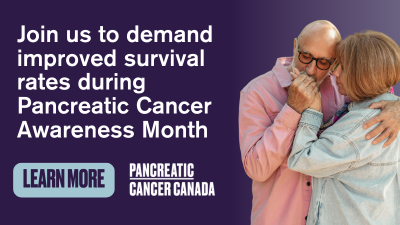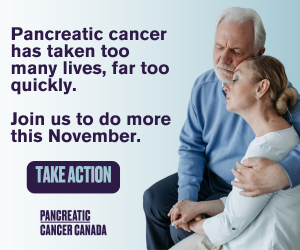The Facts
Genital herpes is a common sexually transmitted infection (STI; also known by the older term sexually transmitted disease or STD) in North America and Europe, and the percentage of the population with this condition is growing around the world.
It is a viral infection of the genitals that can also affect other parts of the body. There's no reporting system for herpes in Canada, but figures from the US suggest that genital herpes due to HSV-2 infections affects approximately 1 out of every 5 adults. Most infected people aren't even aware of their condition.
Causes
Genital herpes may be caused by 1 of 2 types of herpes virus: herpes simplex 1 (HSV-1) or herpes simplex 2 (HSV-2). These viruses can also infect the mouth, causing cold sores. Most cases of genital herpes are caused by HSV-2; however, HSV-1 may also be responsible. HSV-1 infection of the genitals is often caused by someone with cold sores performing oral-genital sex. HSV-2 infection of the mouth is often caused by someone performing oral-genital sex on someone with genital herpes.
The most common form of transmission is through sexual intercourse. The infection can cause blisters that shed viruses. People who have blisters are always infectious. If another person rubs against a blister, the virus can enter through the skin or mucus membranes such as the vagina and mouth. However, not all people who are infected always produce skin blisters, and it is possible for the virus to be produced and spread even when there are no visible sores or blisters. Kissing can also transmit the virus if the mucous membranes of the mouth are infected.
The chances of catching genital herpes depend primarily on the number of sexual partners and whether or not protection was used. Women seem to be more easily infected than heterosexual men.
Currently, herpes viruses can't be eliminated with medications. The virus infects a person's cells and remains with that person throughout their lifetime. Most of the time, the virus lies dormant in the nerve roots, but it can reactivate and move up to the skin surface from time to time, causing new breakouts of sores. These active sores can spread the disease. Sometimes, reactivations of the virus do not cause blister formation but the person remains contagious nonetheless, even though there are no visible sores. Therefore, an infected person with no visible symptoms, such as blisters or sores, can still infect or transmit the infection to an uninfected sexual partner. This is called asymptomatic shedding and causes a larger percentage of new genital herpes infections.
Symptoms and Complications
People infected with genital herpes may have no sores or other recognizable symptoms. When there are sores, they are usually very painful and form a small cluster of red spots or blisters that usually appear 2 to 12 days after contact, with an average of 4 days. These crust over and heal within 2 to 3 weeks for the first episode and about 1 to 2 weeks for later episodes. They can appear around the anus, buttocks, or thighs, as well as the genitals. Where they appear depends on the sexual activity that transmitted them.
The sores are sometimes accompanied by other symptoms such as:
- headache, fever, and other flu-like symptoms
- pain, itching, tingling, or tenderness around the genitals
- painful urination
- joint pain
- swollen tender points in the groin and lower abdomen
For many people with herpes, the symptoms will return. A return of symptoms is called a recurrence. Recurrences are more likely with HSV-2 infection than with HSV-1. People will often notice warning symptoms called a prodrome minutes to days before a recurrence, such as an itching, tingling, or burning sensation in the affected area. The symptoms of a recurrence tend to be less severe and not last as long as the first episode. Over the years, the recurrent attacks may continue but they usually become less frequent with time.
HSV-2 infection increases the chances of getting infected with HIV and spreading it to others.
Pregnant people who have genital herpes may need a caesarean section to protect their babies from infection, as the infection can be very harmful to an infant.
Making the Diagnosis
A doctor will first get a person’s medical history and ask about any signs and symptoms. They can identify genital herpes by taking cells from the surface of the sores and sending them to a lab to confirm the diagnosis. A polymerase chain reaction (PCR) test using the collected cells is preferred if the person has active blisters. Culture tests can also be done to determine if the virus is in the blisters.
It can also be confirmed by a blood test that checks for antibodies, which may be helpful to identify infection in people who do not have genital lesions but may have been exposed to HSV. It is important to have an honest and open talk with your doctor about testing and other STIs so that treatment can begin early if needed.
Treatment and Prevention
There's no cure yet for genital herpes. Antiviral medications such as acyclovir*, famciclovir, or valacyclovir can reduce the severity and duration of symptoms. Treatment should be started as soon as possible and is most effective when started within the first 24 hours of the onset of symptoms.
After the treatment of an episode of genital herpes, antiviral medications can also be used on a daily basis to prevent breakouts of genital herpes. This treatment, also referred to as suppressive therapy, is usually reserved for people who experience more frequent flare-ups (4 or more times per year) or are immunosuppressed. For people with less frequent flare-ups, antiviral medications may be given to keep as a supply at home so the person can start the medication at the first sign of another flare-up. This is called episodic therapy.
It is best to avoid any cream or ointment that doesn't contain a specific antiherpes medication. This includes any preparation containing cortisone or antibiotics. These creams or ointments will not help and in some cases may make things worse. Using rubbing alcohol will only sting–and that's about all. If you are experiencing a lot of pain or discomfort, your doctor may prescribe an appropriate painkiller.
Other measures people can take to ease a breakout include:
- using bath salts (such as Epsom salts) and cold compresses
- sitting in a sitz bath with warm water
- keeping the infected area clean and dry
- wearing loose clothing and cotton underwear
It's important to make sure that the infection doesn't spread to other parts of the body. One of the more dangerous areas to spread the herpes virus to is the cornea of the eye. This can lead to blindness. Therefore, it is important for people with genital herpes to wash their hands thoroughly after touching sores or blisters and to use clean towels every time they wash–and not to reuse or share them. The chances of getting genital herpes infections from toilet seats, bathtubs, swimming pools, or hot tubs are very low.
There are a few things you can do to reduce your risk of catching herpes. People with genital herpes or a history of genital herpes should inform their sexual partner(s) that they have the condition and take appropriate precautions. Correct and consistent use of latex condoms can help reduce the risk of spreading genital herpes. It's important to know that condoms do not always provide complete protection from herpes because they do not always cover all affected areas of the skin.
The medication valacyclovir can also help reduce the risk of herpes transmission (passing on herpes to a sex partner). It should be used in combination with safer sex practices such as consistent condom use.
People with herpes should avoid sex when there are visible sores or should inform their partners and use a condom every time they have sex. They should also check with their doctor to see whether using medication to reduce the risk of transmission would be an appropriate option for them.
If the first episode of herpes occurs during pregnancy, the individual should see their doctor right away to discuss the steps they should take to reduce the risk of passing herpes on to their baby.
All material copyright MediResource Inc. 1996 – 2024. Terms and conditions of use. The contents herein are for informational purposes only. Always seek the advice of your physician or other qualified health provider with any questions you may have regarding a medical condition. Source: www.medbroadcast.com/condition/getcondition/Genital-Herpes



